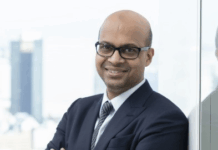The Journey of Building a Venture Capital Firm for an Equitable Generation
Shreyansh Chandak, Manager, Partnerships and Programs, South & Southeast Asia – Village Capital
April 1: Over the past few years, the term impact investing has gained more prominence as investors have become more concerned with addressing some of the world’s most pressing social, economic and environmental challenges.
Impact investing challenges the notion that social and environmental challenges can only be addressed by philanthropy. We’re now seeing a growing number of investors choosing to merge “doing good” with traditional investment practices to address social challenges while still focusing on financial returns.
One organization that has gained recognition for investing in, and supporting impact-driven enterprises is Village Capital. We reached out to Shreyansh Chandak, Manager, Partnerships & Programs, South Asia, to share more about the organization and learn how they’re supporting entrepreneurs in South Asia.
“Village Capital was founded in 2009 to support and drive capital to a broader set of entrepreneurs, solving problems in social sectors to improve their business survival chances and create a more sustainable environment.
Since 2009, we have been on a mission to democratize the decision-making process in venture capital through our peer-selected investment model. This model gives entrepreneurs the decision making power to make funding decisions, and we’ve found that it’s effective in mitigating biases, leading to a more diverse portfolio. In South Asia, 25 % of our portfolio companies are female-led compared to the VC average which is only 15 %. Overall, our companies have an 86% survival rate.”
“We operate in a fairly niche space; under-represented founders and under-represented sectors that have the potential to create large-scale impact, a good example being we started looking into financial inclusion back in 2013, when it was not as developed or popular.
We still continue to focus on sectors such as financial inclusion, looking at specific under-represented target segments such as refugees and migrant workers, climate change and resilience, and education and employability. An important thing to note is that the companies we look to work with are impact-focused, using technology to solve some of the world’s biggest problems.”
What’s your background and how did you get interested in impact-driven entrepreneurship?
“I was fortunate enough to be exposed to the world of social entrepreneurship very early in my career when working with passionate mission driven entrepreneurs. Since then I have always looked for opportunities to contribute that lie at the intersection of business, capital and impact.”
What are the main segments of social cause the company is targeting to make a difference?
“Our mission is to support under-represented founders and under-represented sectors that create impact. Thus, our key focus areas include Future of Work (education & employability), Future of Finance (Financial Inclusion), Sustainability (Climate Tech & Agriculture) and Health. In these sectors, we are looking to engage with both early stage founders and other ESOs, helping them to scale their ventures and develop their capacities.”
What led to the preference for sustainability as an area of focus?
“Climate change is a necessary intervention. SMEs and startups help play a role in mitigating climate challenges given that they employ nearly 45% of the population and generate nearly 33% of GDP in developing countries. Despite the fact that SMEs and startups are key sources of innovation for adaptation, they struggle to secure financing and lack the operational capacity to scale climate resilience and adaptation solutions. Our role in this is to be the support system they need within the ecosystem and one example is our recently launched the Adaptation SME Accelerator Project (ASAP), supporting SMEs and startups that are scaling climate adaptation and resilience solutions in Africa and Asia.
Through this program and others, we want to support companies at the intersection of impact, inclusion, and investability to get the support they need to bring their ideas from vision to scale.”
What are all the aspects of business where Village capital supports the entrepreneurs?
“We provide impact entrepreneurs with the tools and connections they need to develop and scale their ventures through our accelerator programs which provide training, expert advice, and access to network support as well as investors using tools such as Village Capital’s Abaca – our global online platform that helps entrepreneurs analyze and prepare their businesses for investment. The network also matches them with the right investors and resources.”
What does Village Capital’s investment process look like?
“Our peer-selection process brings together a group of entrepreneurs through our accelerator programs and includes training the founders to evaluate each other’s “investability.” At the end of each program, they collectively decide who will receive investments from our affiliated investors. The Village Capital fund continues to make additional investments in this portfolio over time.
Visit our website to learn more about Village Capital’s peer investment model.”
How have you scaled since you started?
“As an organization, we have supported more than 1,100 early-stage entrepreneurs. In South Asia, we began our work in 2011 and have been active in 10 countries in the region, including India, Bangladesh, Sri Lanka, Thailand, Malaysia, Indonesia, and Vietnam. To date, we have supported more than 190 startups in the region of which 25% are founded by women. The VC industry average is 15%.
Our affiliated fund, VilCap Investments, has invested in 17 early-stage South Asian startups.”
What is the biggest challenge you’ve faced to date and how did you overcome it?
“Every day is a new challenge. You wake up and find more creative and innovative ideas to support your founders and the ecosystem at large. That’s what makes the job interesting. No two days are the same. On one day, you might be interacting with the Heads of the Banking Institutions to try and match their problems with innovations of your founders, on the other day you are working with your founder to identify solutions for their hiring challenges.
You look to solve these challenges by having deep empathy with every single stakeholder you interact with – investors, founders, prospective partners. You listen deeply, do your homework well and look to collaborate rather than compete.”
What have been the personal & business milestones of this social investment journey?
“Last year was great. Our alumni companies cumulatively raised USD 100MM. We also got the opportunity to work with the World Bank for the WeFi Initiative to devise innovative interventions that would address the gender financing gap for the women entrepreneurs of the country. “
Future plans for the company…
“We are hoping to deepen our engagement across the ecosystem in South Asia – Nepal, Bangladesh, India, SL. We are also hoping to introduce more innovative product offerings for the ecosystem in the region. Stay tuned for more!”
Views: 0



